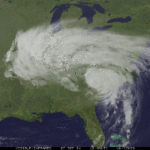A groundbreaking discovery that could bridge the gap in our understanding of the universe’s expansion rate.
- James Webb Space Telescope captures image of supernova ‘Hope’.
- Supernova Hope could help resolve the ‘Hubble tension’ in cosmology.
- The supernova exploded when the universe was just 3.5 billion years old.
- Gravitational lensing allows for multiple images of the supernova.
- Supernova Hope is a Type Ia supernova, useful for measuring cosmic distances.
- Observations suggest a Hubble constant value that aligns with local universe measurements.
Astronomers using the James Webb Space Telescope (JWST) have made a remarkable discovery by capturing an image of a distant supernova, now known as ‘supernova Hope.’ This supernova, which exploded when the universe was approximately 3.5 billion years old, offers potential insights into a significant issue in cosmology known as the ‘Hubble tension.’ This tension arises from conflicting measurements of the universe’s expansion rate, known as the Hubble constant, when observed from different time frames. The JWST’s observations of gravitationally lensed supernovas like Hope could provide a new method for measuring this rate, potentially resolving the discrepancies. The discovery began when a team led by Brenda Frye from the University of Arizona noticed three unusual points of light in a JWST image of a galaxy cluster, which were not visible in earlier images taken by the Hubble Space Telescope. These points were confirmed to be a supernova with unique characteristics. Supernova Hope is classified as a Type Ia supernova, which occurs in binary star systems where a white dwarf star draws material from a companion star, leading to a thermonuclear explosion. These supernovas are considered ‘standard candles’ in astronomy due to their consistent brightness, making them valuable for measuring cosmic distances. The gravitational lensing effect, predicted by Einstein’s theory of general relativity, allows the light from supernova Hope to be seen in multiple images due to the warping of spacetime by massive objects. This phenomenon is crucial for determining the Hubble constant, as it provides time delay measurements and distance calculations. The research team has confirmed that supernova Hope is one of the most distant Type Ia supernovas observed, with light that has traveled to Earth for 10.3 billion years. The findings suggest that the Hubble constant value derived from supernova Hope aligns with measurements from the local universe, while differing from values obtained from earlier cosmic observations. The team’s research is currently undergoing peer review, with further JWST observations planned to refine these measurements.·
Factuality Level: 8
Factuality Justification: The article provides a detailed and informative account of the discovery of supernova Hope and its implications for understanding the Hubble tension. It avoids sensationalism and presents scientific concepts accurately. However, it includes some tangential details about gravitational lensing and general relativity that, while relevant, may distract from the main focus on the supernova and its significance. Overall, the article is well-researched and presents factual information, but the slight digressions and complexity of explanations prevent a perfect score.·
Noise Level: 8
Noise Justification: The article provides a detailed analysis of the discovery of supernova Hope and its implications for understanding the Hubble tension. It discusses the scientific methods used, the significance of gravitational lensing, and the potential for new measurements of the Hubble constant. The content is relevant, well-supported by evidence, and stays on topic, making it a valuable read for those interested in cosmology.·
Key People: Brenda Frye (study team leader and University of Arizona researcher)
Financial Relevance: No
Financial Markets Impacted: No
Financial Rating Justification: The article discusses astronomical observations and cosmological concepts, specifically the Hubble tension and supernova observations, which do not pertain to financial topics or impact financial markets.·
Presence Of Extreme Event: No
Nature Of Extreme Event: No
Impact Rating Of The Extreme Event: No
Extreme Rating Justification: The article discusses a scientific discovery related to a supernova and its implications for cosmology, but it does not describe an extreme event that occurred in the last 48 hours.·
Move Size: No market move size mentioned.
Sector: All
Direction: Neutral
Magnitude: Medium
Affected Instruments: No
 www.space.com
www.space.com 





